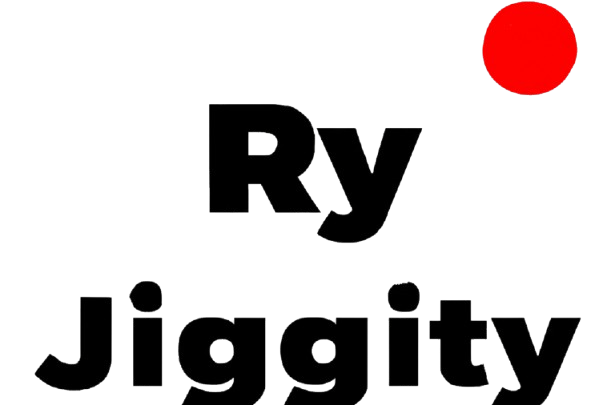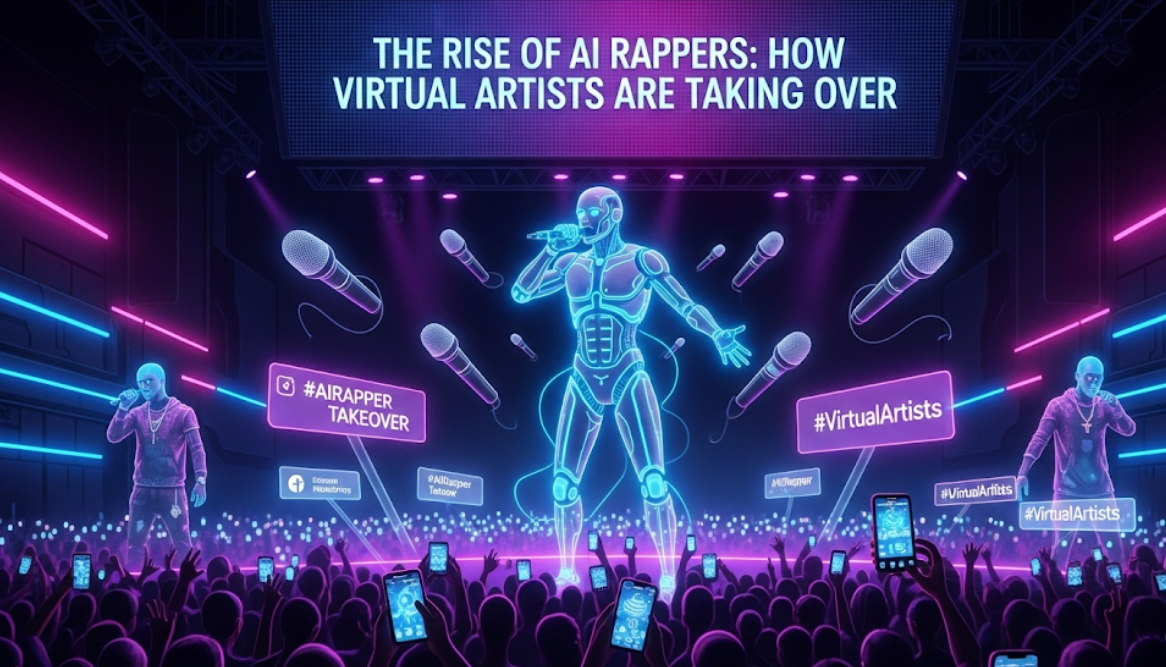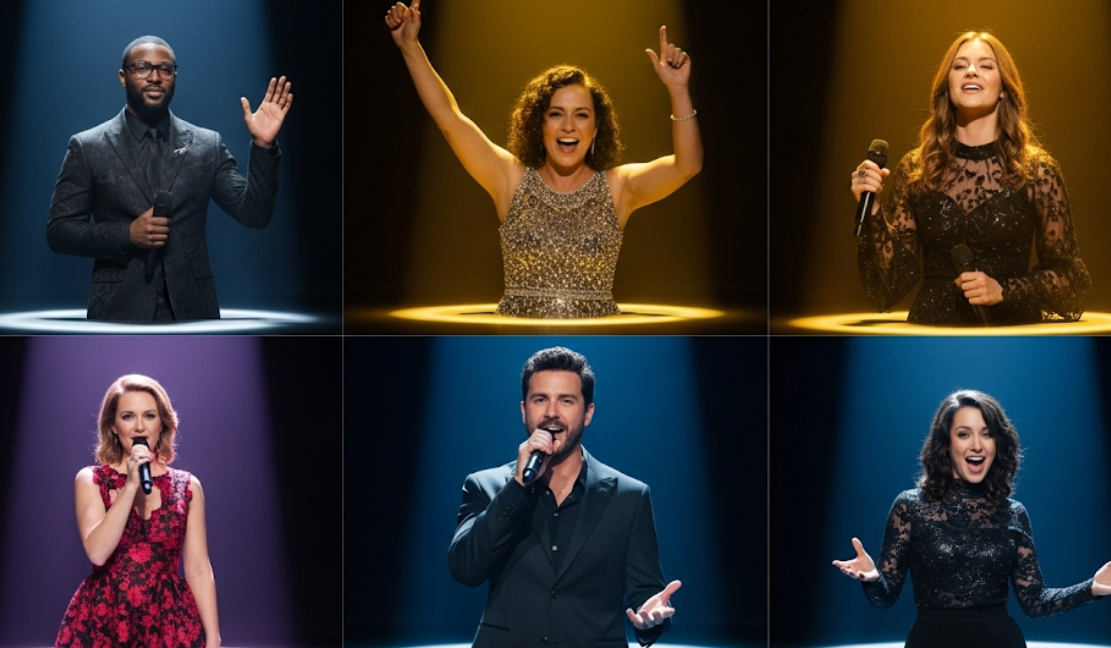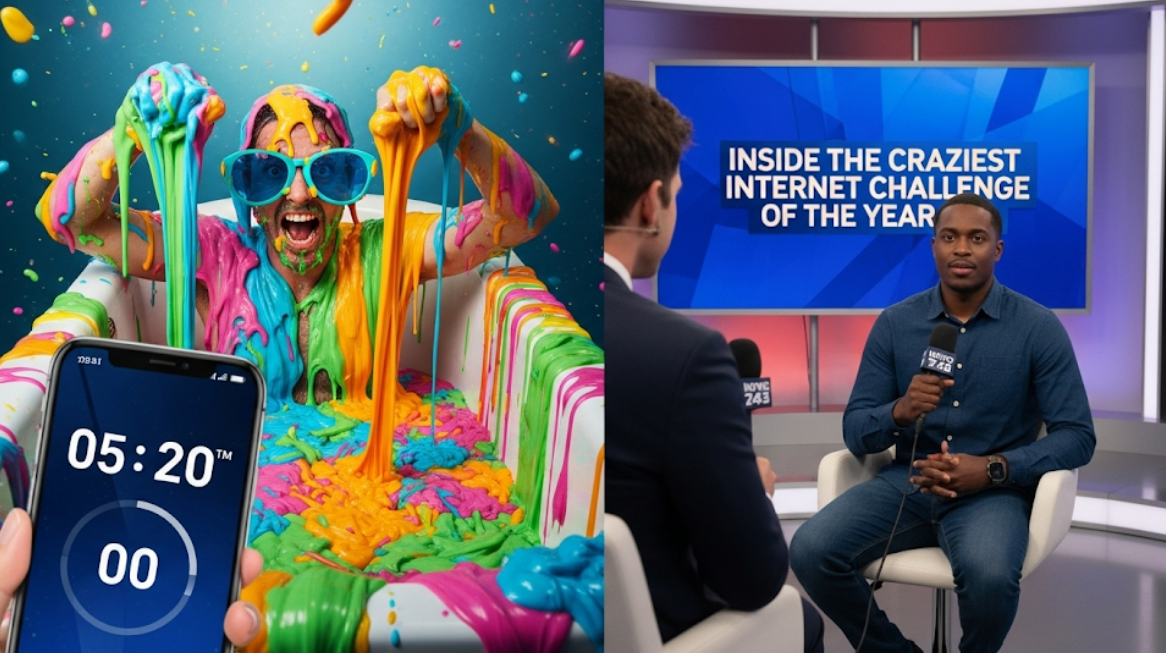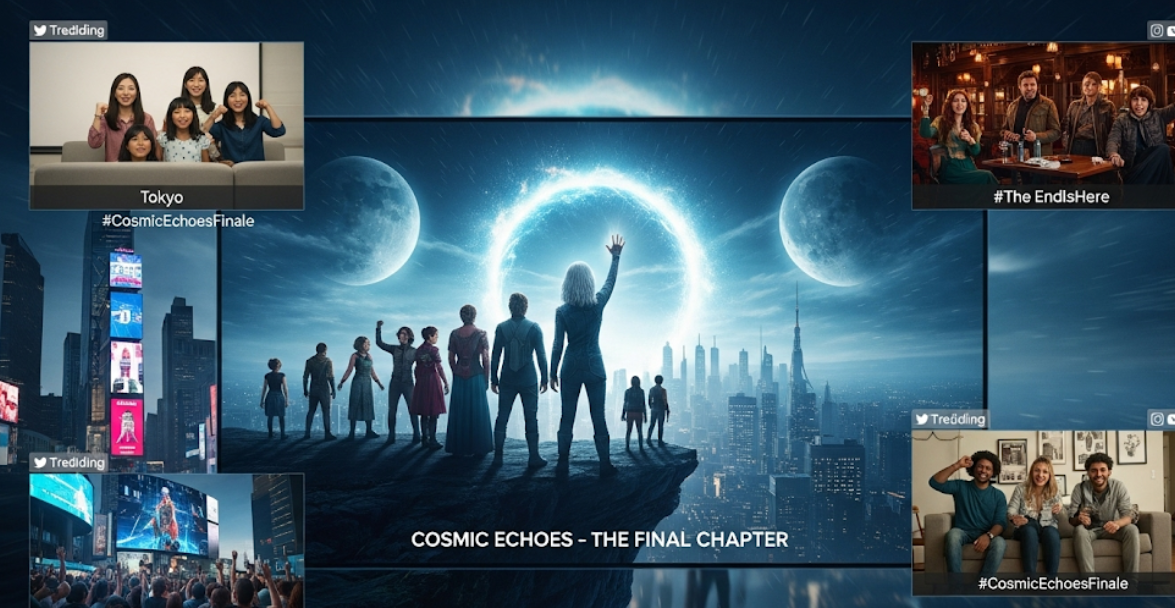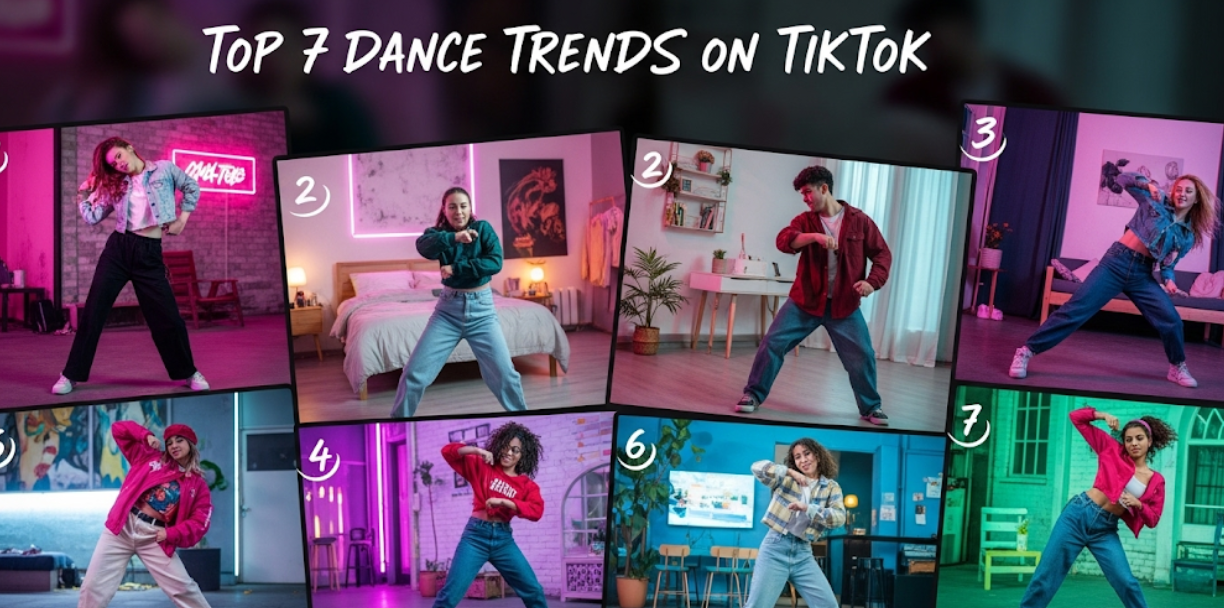Scroll any “For You” page and you’ll hear it: razor-sharp flows from artists who don’t exist—at least, not in the flesh. AI rappers and virtual performers have moved from curiosity to full-blown cultural force, shaping what gets made, who gets paid, and what “authentic” even means. This is the inside story of how we got here, what’s powering the boom, and where the industry fights and fortunes are headed.
The spark: a scandal, a takedown, and a blueprint
The modern AI rap story didn’t start with a triumph. In 2022, Capitol Records signed—and days later dropped—FN Meka, a glossy CG “rapper” whose imagery and lyrics created a firestorm of backlash against Capitol for racial stereotyping. The label’s executives made a public apology to the Black community, and the incident proved an embarrassing cautionary tale about how not to introduce a virtual artist.
Then came the AI-clone bombshell. One April evening of 2023, an anonymous producer named ghostwriter977 posted “Heart on My Sleeve,” a track synthesizing the voices of Drake and The Weeknd that few listeners could tell was fake. Before platforms removed the track, “Heart on My Sleeve” racked up ten million plays; within days, Recording Academy President Harvey Mason Jr. confirmed it would be ineligible for a Grammy nomination, another embargo falling on the AI melodic content.
If FN Meka was the warning, “Heart on My Sleeve” was the proof of concept: AI could instantly and easily mint viral rap.
The infrastructure: text-to-track tools
Today’s AI rappers are driven by text generators designed to turn prompts into music, including rough track references.
Social feeds — Suno and Udio (app from Uncharted Labs) – user tools that took off in 2024 for producing radio-ready tracks within seconds. Their expansion also prompted landmark suits by the big labels for wide-scale training and output infringement—cases that are now considered a leading indicator of how copyrighted recordings can be utilized in AI models.
Now you have a pipeline where anyone can input a flavor (“Detroit drill, minor key, nocturnal mood, heavy 808 swing”) and get back a song that would convincingly sound like it was recorded by an established rapper.
Why this is essential to hip-hop: rap is inherently a genre about gambles and building upon the success of others. AI industrializes that ethos — a sample of flows and micro-cadences becomes nothing more than style transfer, near zero cost experimentation. Which it thrives at on TikTok and Shorts, where an AI generated pattern is too sticky to escape after 15 seconds of listening.
From controversy to playbook: consent first
And not every headline is a takedown. Other artists have leaned in—but on their terms.
One of the better terms available was from Grimes, who would let creators use her AI voice, give over 50% of the master royalties and distribute through her Elf.Tech pipeline. This revenue-splitting, in announced fashion and on supported supply chain, truly was a legal-compliant way for creators to create with a recognizable voiceprint.
Platforms are also building guardrails. YouTube introduced “AI music principles,” a music incubator with major labels and a new process for partners to request removal of AI tracks that mimic an artist’s unique voice, codifying a hybrid approach: innovate but preserve identity and IP.
Then, after a contentious stand-off, TikTok and Universal Music Group signed an amended 2024 agreement that contained explicit AI protections and artist-friendly provisions — which suggested that big platforms will indeed treat AI voice cloning as an opportunity for licensing and enforcement of the kind we feared would be frittered away in a free-for-all.
This is the new default setting: if you want to make a virtual rapper based on a voice or famous personality, you should ask permission and give credit, not take money out of a human being.
The legal landscape: what’s permitted and what comes after
The legal fabric is defined by two fronts:
Copyright & training data. According to the Suno/Udio cases, unauthorized scraping of copyrighted sound recordings to train or emulate outputs is unlawful. Labels are looking for injunctions and damages, with the courts’ rulings set to provide a template for the rest of the AI-music stack.
Voice rights & deepfakes. With other states also considering laws to safeguard artists, Tennessee’s novel ELVIS Act (Ensuring Likeness, Voice, and Image Security) guarantees a singer’s voice can’t be cloned by an AI without permission. It was passed on March 21, 2024 and went into effect that summer.
But with regulatory momentum, coupled with platform policy moves, the wild west days are numbered. So I predict the next step will be licensed training sets, permissioned voice models and standardized splits, especially from commercially ambitious virtual rappers.
Why audiences can’t stop listening
- Novelty with familiarity. They sound new, they also sound like what you love; tight drums, melodic trap hooks, sped-up samples by the nature of their creation and perhaps our aesthetic heritage, benefit from social-first song structure. The generator is always on-trend because it can trend-follow between sessions.
- Extreme iterability. A virtual act can upload five different choruses on a Monday, test them overnight with Shorts and Reels and have the release up by 4 pm Tuesday. That feedback loop shortens the A&R cycle from months to hours.
- Lore without limits. Virtual artists are characters. Their backstories are changeable, intermingling with the sci-fi mythos, glitchy personas and anime aesthetics that go on tour with the music.
- Participation built-in. Fans do not merely listen; they participate. Duet the rap, change the beat, re-avatarize, and release a “remix” within that same mythological universe. It’s hip-hop’s cypher culture—but on an internet scale.
A Playbook to Break Out In 2025 For AI Rappers
Teams are mining this growth script:
Lane, not face. Start by locking into a narrow sonic alley (like after-hours pluggnb, Jersey club drill hybrids). Keep a few signature production pieces (bpm, drum palette, ad-lib set) to create an established sonic identity before lore-heavy visuals.
Micro-drops > albums. For short video, release 20–40-second hooks first. Watch what sticks. Turn the winners into full songs and release them on DSPs.
Treat the model like a band. Keep a human writer’s room to help steer punchlines, cultural references and narrative arcs. Where AI crafts patterning, humans provide the subtext and surprise.
Consent-based voice models only. Create or license clean voices. Work with partners that respect opt-outs and takedown rights. (Youtube removal paths and label agreements are becoming table stakes very fast!)
Credit and splits on day one. Make a clear split sheet: lyricist(s), beatmaker(s), vocal performer or pattern owner, pattern wrangler/engineer. If you use a licensed voiceprint (like Grimes), then stick to the printed royalty terms.
Community = A&R. Launch fan prompt contests, stitch battles and “finish this bar” duets. Create a canon of the community-created content and include the best in new features.
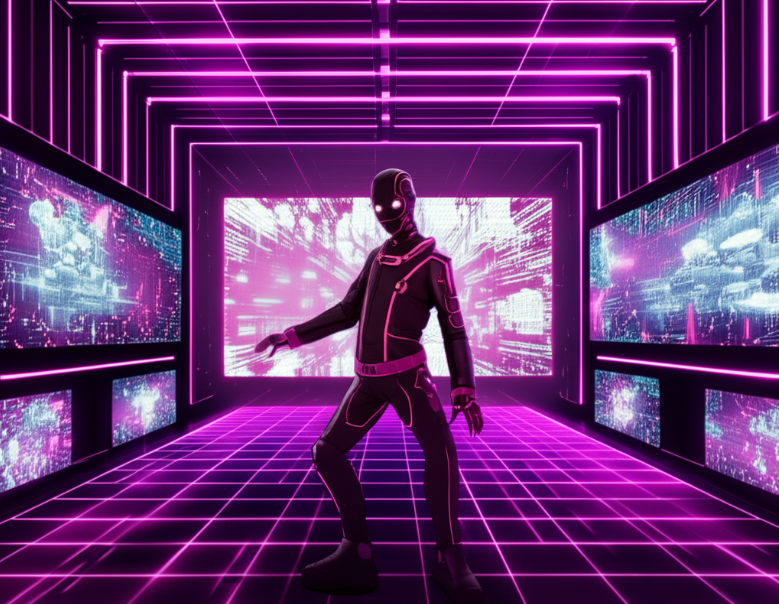
The business: who gets paid at all?
Now, there are four layers in AI rap money:
Licensed Catalogs or Voices – Whenever IP owners (labels, publishers, artists) are involved. Blanket licenses for training, rev-share on the outputs — we will start seeing a lot more of this type of deal.
Hands of the model makers (the groups that adjust voice/flow models) – Next they will begin to function as producers but with credits and fees per track or project.
Creators (writers, beatmakers, prompt artists) – All the great AI-rap tracks still get their seed from human concepts. Virtual artist projects house thriving writers’ rooms and beat collectives.
SaaS music tools, Distributors or Social Apps – The ongoing revenue lines are things like distribution deals and creator-facing subscriptions (in addition to enterprise licensing).
Grimes’ 50/50 master split became a handy template; more artists will release “voice EULAs” (rates, usages, brand rules).
The Counter-Argument: Transparency, Morality, and Attribution
Hip-hop is recognized as voice, breath, and an outlook of a lived life. But critics worry that AI rappers might reduce that tradition to a list of styles on a spreadsheet. They also fear job displacement and insidious stereotypes being propagated, as we learned from the FN Meka episode.
The AI-rap response is, in essence: virtual acts grow a culture rather than cannibalize it (by empowering bedroom creators, creating multilingual crossovers, and unlocking formats like interactive lore and infinite remixes that traditional acts never could at scale). The closest to an industry position seems to be that AI is ok; speech synthesis/impersonation of another person without consent isn’t, but additionally content created using AI should be guided by humans not hardware.
The platform and policy wave
Most significant 2023–2025 rule changes influencing the space:
YouTube is offering guidelines, industry incubator for AI music and takedown path for AI voice-cloned tracks through music partners.
TikTok x UMG 2024: AI barriers and artist assurances in new licensing deal following big licensing dispute.
State law: Protections under Tennessee’s ELVIS Act, the U.S. test case for voice rights in the AI era, allow artists to prevent unauthorized cloning.
Federal courts: The Suno/Udio lawsuits over what constitutes fair use in training, and how closely training outcomes can be tailored to protected recordings.
Combined, these changes are herding the mayhem into a permissioned marketplace for virtual artists to expect (and make) that cash.
Case studies: what we’ve learned
FN Meka (what went wrong): visuals too slick and a cultural blind-spot; narrative of neither clear consent nor credit; line-crossing in the imagery. Outcome: Immediate pushback, termination of the contract and a reputation lesson that was felt across the whole industry.
Ghostwriter, “Heart on My Sleeve” (what it taught us): content multiplied by controversy equals virality, but without agreement, the shelf life won’t be that extensive. That made institutions get their rules in order and the platforms move faster to establish some policy.
Grimes’ Elf.Tech – what is working: a transparent, opt-in model with clear, open percentages on both royalty and distribution pathways. A consent-driven Voice-as-a-Service prototype.
How to construct and own the viral marker
Lead with consent. If the voice is recognizable — permission & deal in writing. Opt for the platforms that have pathways for removal and clear content moderation policies.
Credit your humans. Writers, beatmakers, engineers, model trainers, vocal talent. Transparency builds trust.
Sound before spectacle. Before you worry about character lore, nail a repeatable sonic identity (tempo, drum kit, hook style).
Shorts first. TikTok/Shorts friendly; prototype choruses and 8-bar rap moments, expand winners.
Iterate like a startup. Consider every drop a free A/B test, and comments/stitches as market research.
Community canon. Turn the greatest fan prompts and duets into official releases to produce a participatory universe.
Guardrails for culture. Run sensitivity checks—humans in the loop to prevent dangerous tropes and lazy stereotyping.
Data with taste. Let analytics do the driving, but depend on human editors for lyrics, sourcing & plotting narrative twists.
Distribution hygiene. Get your split sheets, metadata & ISRCs right + official rules on using the licensed voice like GrimesAI and paying out royalties as required.
Prepare for enforcement. Have responses to takedowns; save stems and provenance data proving originality.
What’s next: the hybrid era
The next wave is not going to be “humans vs. machines” — it will be hybrids. Expect to see:
Rappers live, on top of a virtual alter ego that will produce between tours. A reverse human x AI duo!
Region-specific voice packs, allowing the virtual artist to competently rap in other languages (Urdu, Spanish, Japanese…) with the help of local native speaker writers.
Licensable flow libraries — in which MCs from established scenes would rent out codified pieces of their cadence to aspiring newcomers on revenue contracts, akin to sample packs, but for delivery and phrasing.
Virtual acts which are eligible to chart as rulebooks adapt, credited in a humanistic way when it exists (lyrics, composition, model direction) even if the voice is synthetic. (Indeed, The Recording Academy’s direction already places some restrictions around what can count as a human contribution.)
Power is leaving the clutches of streaming’s algorithm in the 2010s and into generative algorithms midway through the 2020s in an era where speed to taste, tooling + community will win. It is only natural that hip-hop arrived first, given its DNA as sample-and-build.
Bottom line
AI Rappers are no longer a novelty but instead a new class of act, complete with its own production cycle, legal landscape and go-to-market strategy. The clear message from the industry: consent, credit and compensation are not optional. That in-between space is where virtual artists can play online at an internet pace: co-create with fans, sample hooks to see who bites, and ship all day every day.
The culture has also spoken unequivocally on the matter: respect the lineage. The projects that win will be the ones where humans—writers, MCs, producers—remain at the core of it all and we use machines for superpowers and not shortcuts. So don’t be too shocked when that new raw flow you hear is from an artist that doesn’t exist on stage. By 2025, the biggest rapper in your feed could be an entity — and that winning verse on the track might have begun as a prompt.
